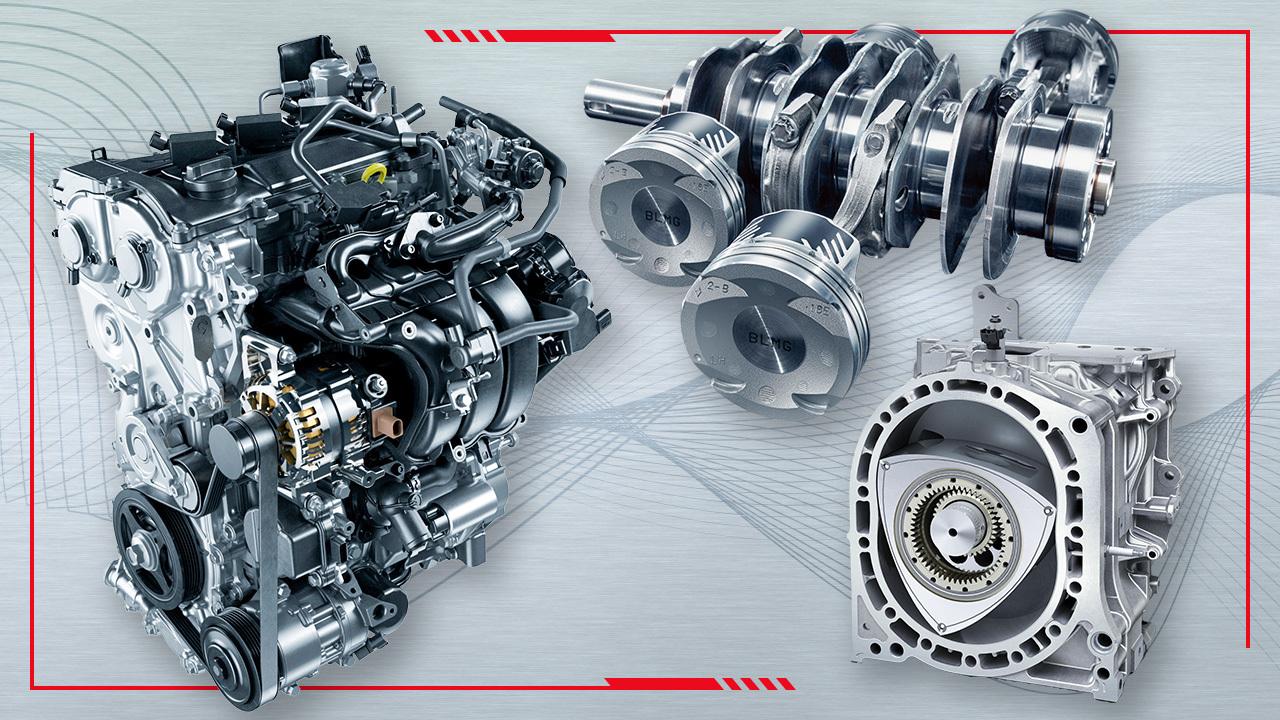
This new series focuses on the engine sounds that enchant car fans. The first article gets down to the basics, explaining the relationship between engine mechanisms and sound.
Muffler music
Have you ever heard a modified car, perhaps at the racetrack, with a so-called “straight pipe,” where the stock muffler has been removed?
Although such vehicles are modified in various ways, the raspy, explosive roar seems to come from an entirely different engine. These machines are what Morizo describes fondly as “cars that… make a lot of noise.”
Most mufflers in today’s production cars employ multi-stage expansion, in which multiple internal chambers cause exhaust gases to expand and lose pressure. The reflection and resonance of partition walls between chambers absorb noise.
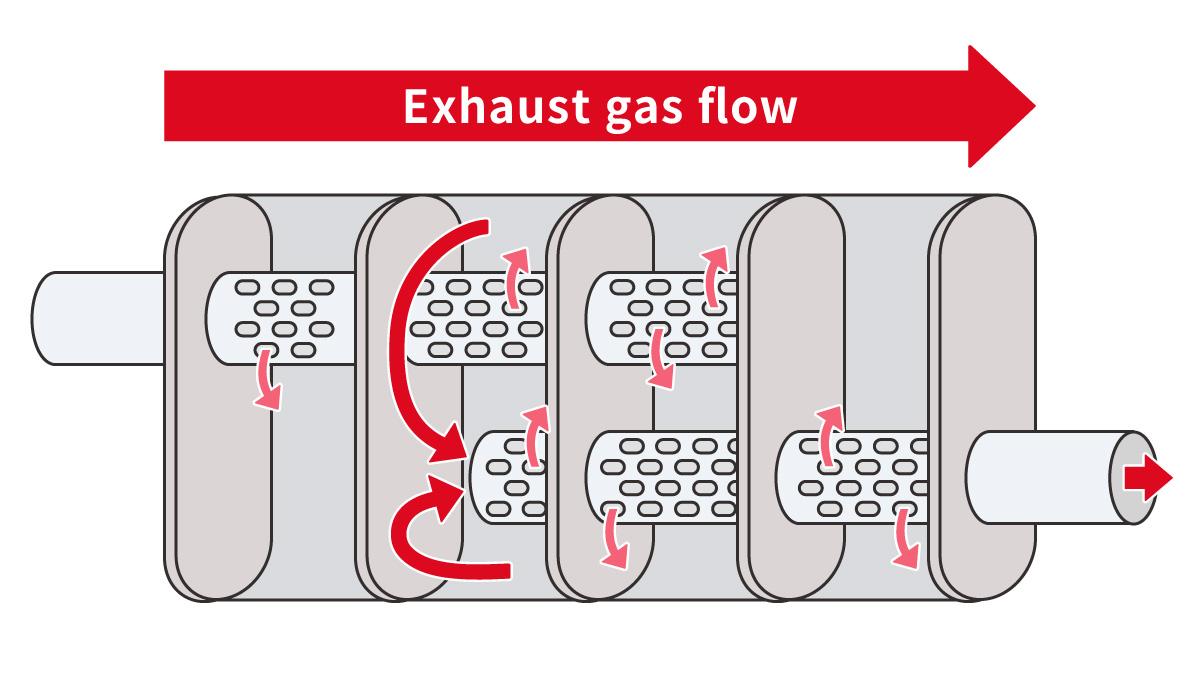
Even as mufflers are designed to suppress sound, the fact that they possess resonators means they behave similarly to musical instruments. Adjusting the structure and materials of these components affects not only the volume of sound but also its quality.
Another source of noise is the supercharger, which can be used to feed compressed air into the engine to boost airflow.
Some readers may have noticed strange hissing or whistling noises emitted by sports cars or racing machines.
These are the signature sounds of vehicles with turbochargers, which use the exhaust flow to spin a turbine whose rotation powers a second turbine on the intake side, compressing air and supercharging the engine as the accelerator is applied or released.
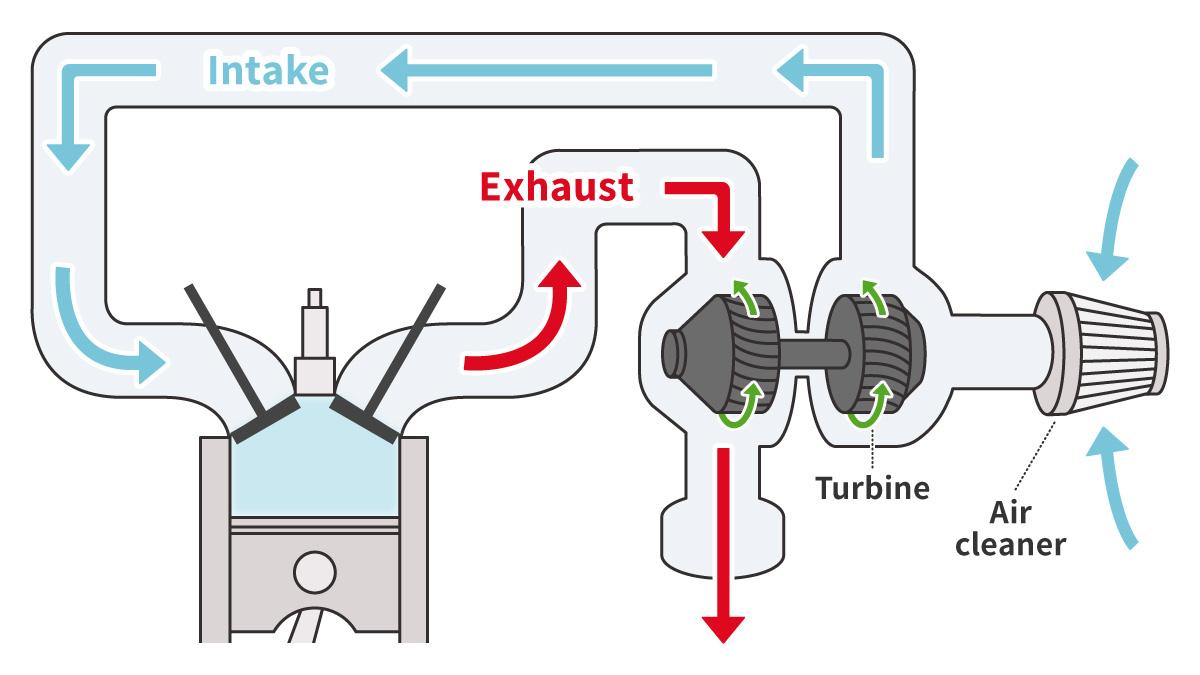
The hiss is the sound of excess compressed air being released when the driver steps off the accelerator, while the fluttering whistle is the squeal of compressed air that remains trapped in the system and returns to the turbine side.
Different sounds for different engines
Let’s take it back a step. As we’ve mentioned, car engines have multiple cylinders to give them more power.
In modern cars, the starting point is 3 cylinders, which has emerged as the go-to choice for compact models over the past decade or so. From there, we go up to 4-cylinder engines, traditionally used across many vehicle types; the rare 5-cylinder, adopted only by German automakers; 6-cylinder engines, which come in inline, V, and horizontally-opposed configurations; and finally the high-power, high-performance world of engines sporting 8, 10, or 12 cylinders.
The terms inline, V-type, and horizontally-opposed describe how these multiple cylinders are arranged along the crankshaft: in a single row, two rows creating a V shape, or horizontally on either side, with the opposed pistons moving in opposite directions (e.g. one left, one right).
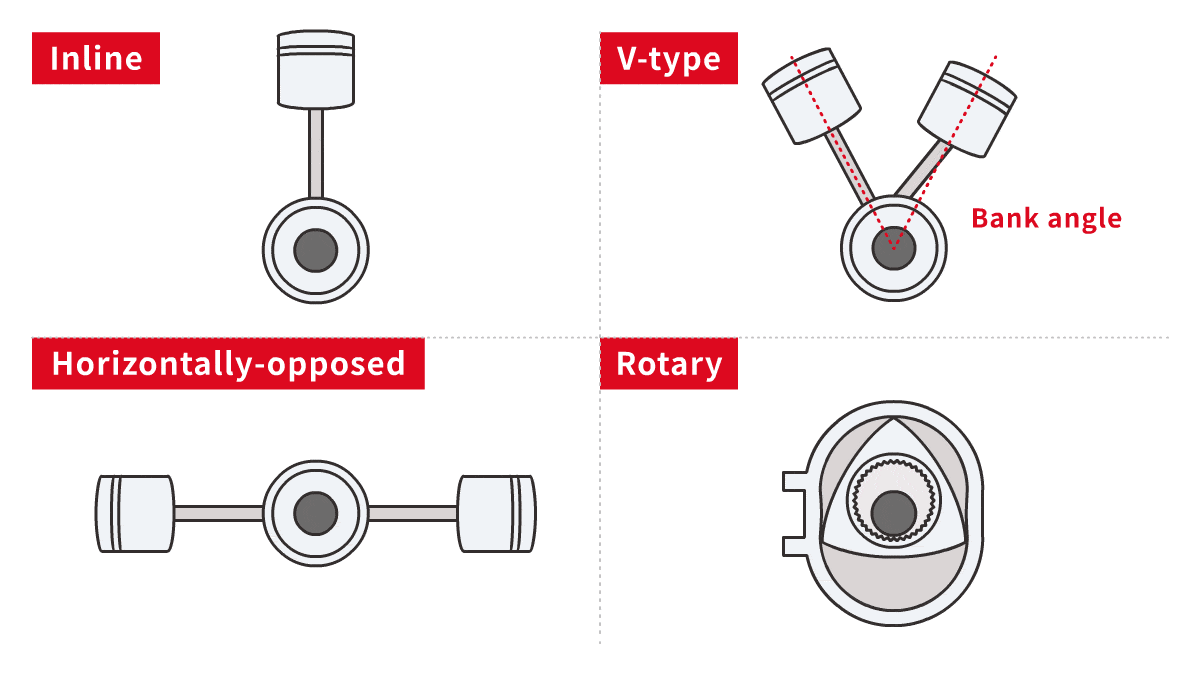
In a V-type engine, the angle between the two rows (or “banks”) of cylinders is called the bank angle.
Now, let’s see how these configurations affect the engine’s sound.
Start with the number of cylinders. Roughly speaking, more cylinders make for a smoother sound. If we think back to the four-stroke mechanism explained earlier, combustion (explosion) occurs once every two crankshaft revolutions.
Revving slightly above idling (1,000 rpm), a three-cylinder engine thus hits 1,500 beats (explosive sounds) in a minute; this goes up to 2,000 with four cylinders and 6,000 with twelve. More cylinders mean a finer, smoother, and—as beats increasingly overlap—fuller sound.
Next, let’s compare different configurations with the same number of cylinders: an inline-six versus a V6. Structurally, the cylinders of an inline-six engine always move in pairs, one in the intake-compression phase and the other in combustion-exhaust.
In this setup, the vertical and horizontal vibrations cancel each other out, achieving a natural balance. This is why inline six-cylinder engines and V12 engines that combine two banks of six inline cylinders are known as “perfectly balanced” engines, with a clear sound free from the noises produced by vibration.
When bringing together the exhaust manifolds (piping), it’s also possible to create a smooth flow without the exhaust gases interfering with each other. The high degree of freedom in arranging exhaust pipes also contributes to a clear sound.
By contrast V6 engines are not perfectly balanced, with the vertical and horizontal vibrations combining to exert a twisting force. The need for a structure that curbs vibration, along with a higher number of required parts, also adds to the mechanical sounds.
Although V6 engines are made more compact by placing the cylinders in two rows, the open V-shaped geometry leaves little space in the engine bay and offers less flexibility in piping layouts. In other words, it is much harder to create a clear sound.
Next up, we have the slightly odd V8 engine. Even with the same bank angle, V8s have two distinct sounds depending on whether they use a cross-plane or flat-plane crankshaft; the former produces the rugged rumble of American V8s, while the latter delivers that clean racing car vroom.
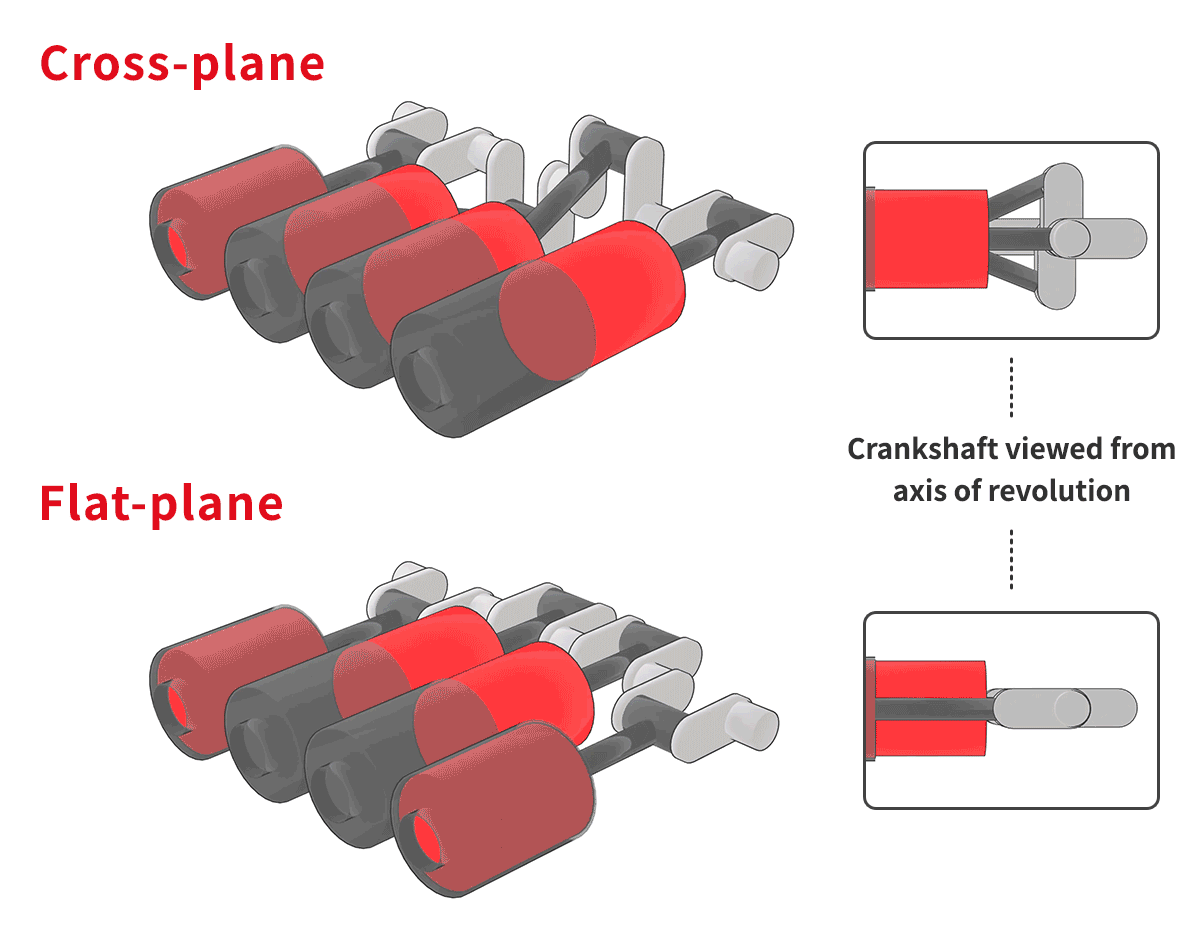
This stems from the fact that, in a cross-plane V8, while the eight cylinders fire at even intervals overall, the intervals are unequal when looking at a single bank.
At uneven combustion intervals, exhaust gases interfere with each other in the piping, impeding a smooth flow. This choppy movement of air translates into the rumbling sound particular to these engines.
More to come!
Does an engine’s shape change the way it sounds?
With assistance from Subaru and Mazda, we also plan to showcase horizontally-opposed “boxer” and rotary engines, which work very differently from reciprocating engines.
And here is something we prepared especially for this series: the sound of the G16 engine, developed exclusively for the GR Yaris. What you hear is not a recording of the car but the engine itself being fired up in the workshop. Be careful not to set the volume too loud.
So, how does this rough and raw engine sound get elevated to a heart-stopping roar? In this series, we will share the answer, along with the stories of those chasing the ideal engine sound.

